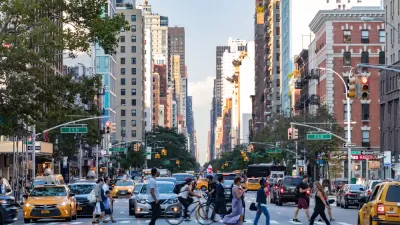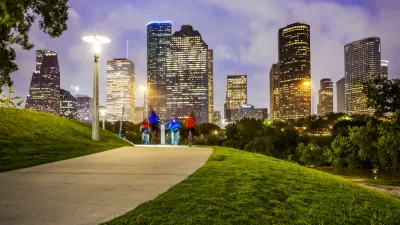As the real estate market comes back to life, walkable urbanism is poised to become the dominant mode of development across America. Emily Badger explains why Washington D.C.'s land use evolution portends the future of cities everywhere.
Once seen as a niche real estate market, walkable urbanism is poised to become the real estate market in America. So says George Washington University professor Christopher Leinberger, who will present his research on the growth of walkable urbanist development in Washington D.C. at a ULI conference on the topic next week. For Leinberger, the trends he's observed in Washington, which "now leads the nation with 43 distinct neighborhoods [he] has identified as 'regionally significant walkable urban places,'" will be coming soon to cities everywhere.
"Less than 10 percent of the entire metropolitan land mass is where
development wants to go over the next generation," Leinberger says. "We
don't need to add another square foot – or, in the case of sprawl,
another square mile – of land to the metropolitan area. We've already
urbanized as much as we need to."
"It helps his argument that he's talking in market trends and not moral
imperatives," writes Badger. "Much of the conversation around 'walkable urbanism' sounds
almost paternalistic to suburban ears, as if everyone should and must
decamp to high-rise condos above a Whole Foods."
"He isn't advocating that suburbanites move downtown. If he's imploring
anyone to action, it's the builders and real estate developers who don't
seem to have picked up on shifting market demand yet, and the
policymakers who have the power to clear obstacles to this kind of
development (for starters, by promoting multi-modal transportation and
mixed land use)."
FULL STORY: The Next Major Real Estate Cycle: Walkable Urbanism?

Study: Maui’s Plan to Convert Vacation Rentals to Long-Term Housing Could Cause Nearly $1 Billion Economic Loss
The plan would reduce visitor accommodation by 25,% resulting in 1,900 jobs lost.

Alabama: Trump Terminates Settlements for Black Communities Harmed By Raw Sewage
Trump deemed the landmark civil rights agreement “illegal DEI and environmental justice policy.”

Why Should We Subsidize Public Transportation?
Many public transit agencies face financial stress due to rising costs, declining fare revenue, and declining subsidies. Transit advocates must provide a strong business case for increasing public transit funding.

Paris Bike Boom Leads to Steep Drop in Air Pollution
The French city’s air quality has improved dramatically in the past 20 years, coinciding with a growth in cycling.

Why Housing Costs More to Build in California Than in Texas
Hard costs like labor and materials combined with ‘soft’ costs such as permitting make building in the San Francisco Bay Area almost three times as costly as in Texas cities.

San Diego County Sees a Rise in Urban Coyotes
San Diego County experiences a rise in urban coyotes, as sightings become prevalent throughout its urban neighbourhoods and surrounding areas.
Urban Design for Planners 1: Software Tools
This six-course series explores essential urban design concepts using open source software and equips planners with the tools they need to participate fully in the urban design process.
Planning for Universal Design
Learn the tools for implementing Universal Design in planning regulations.
Smith Gee Studio
Alamo Area Metropolitan Planning Organization
City of Santa Clarita
Institute for Housing and Urban Development Studies (IHS)
City of Grandview
Harvard GSD Executive Education
Toledo-Lucas County Plan Commissions
Salt Lake City
NYU Wagner Graduate School of Public Service





























